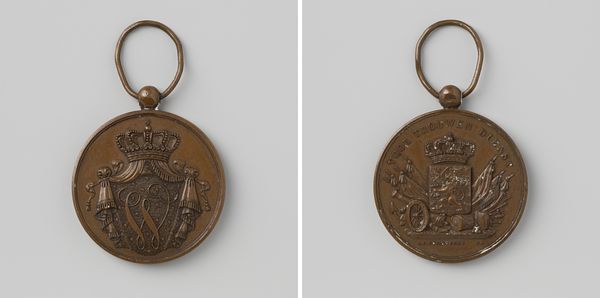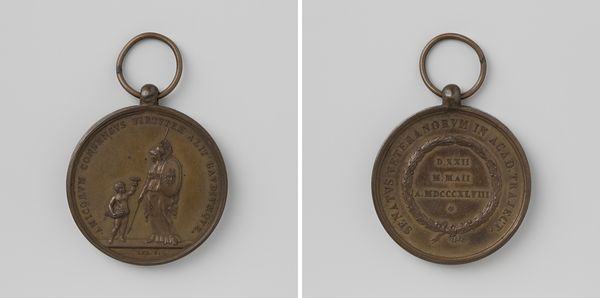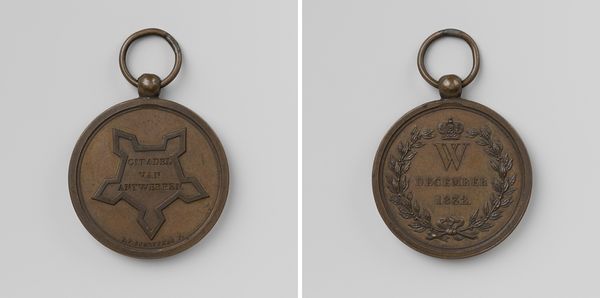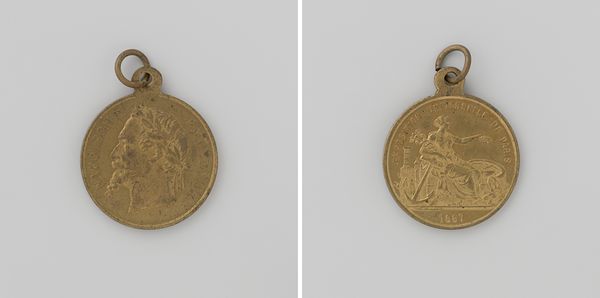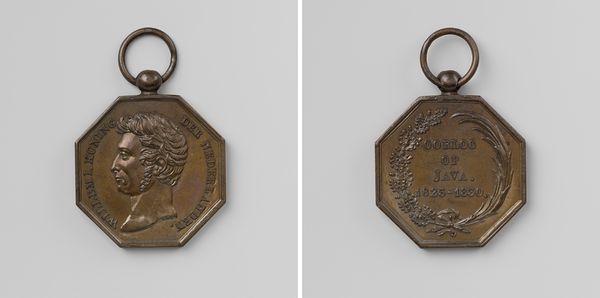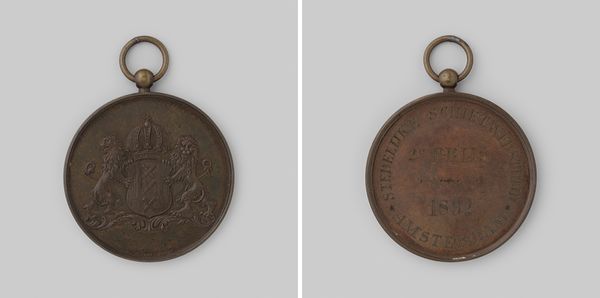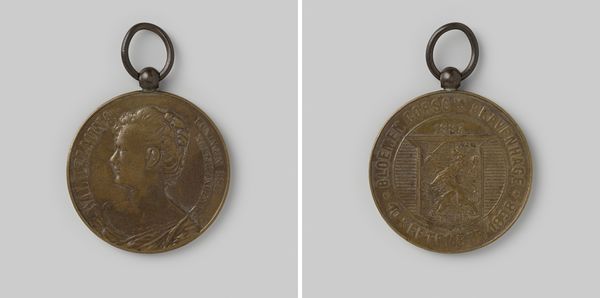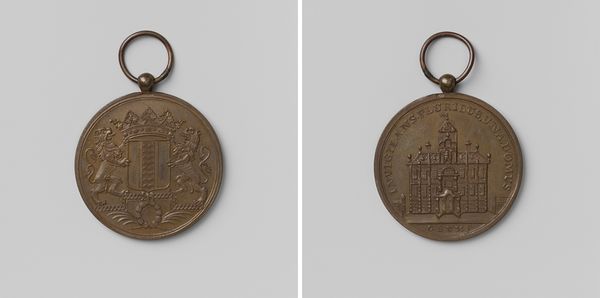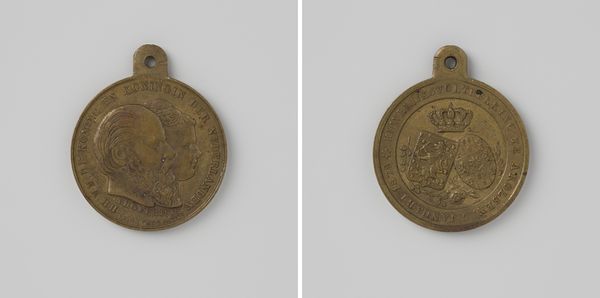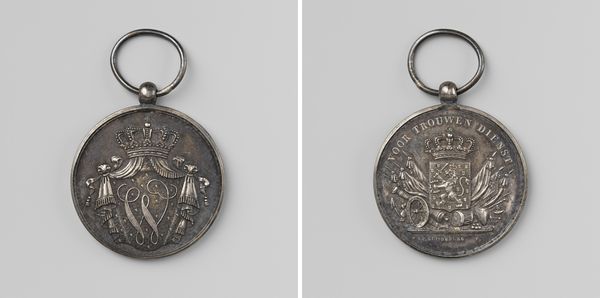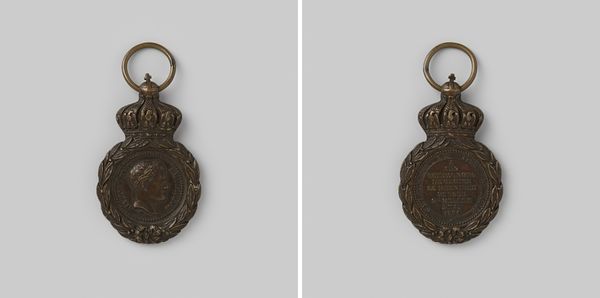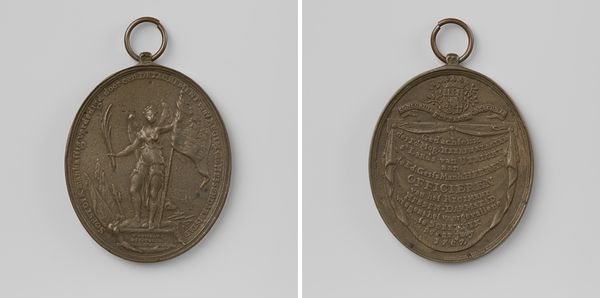
metal, relief, bronze, sculpture
#
neoclacissism
#
metal
#
relief
#
bronze
#
sculptural image
#
geometric
#
sculpture
Dimensions: width 2.9 cm, height 3.4 cm, height 4.3 cm, weight 13.86 gr
Copyright: Rijks Museum: Open Domain
Curator: Let’s discuss “Metalen Kruis 1831,” a bronze relief sculpture made by David van der Kellen in 1831, currently held at the Rijksmuseum. It presents as a Maltese cross. What’s your initial reading? Editor: Austere and solid. The colour of aged bronze gives it a gravitas, a somber yet dignified presence. I immediately think of historical weight. Curator: Indeed. Crafted from bronze, this metal was not only durable but symbolically important, often linked to commemorating significant historical or military events. Bronze's value also dictated that this would have been owned by the middle class as this was the industrial era. Editor: I am interested in the interplay of geometric form with the detailing of the wreaths and crown within the circular medallion at its centre. The smooth, cold feel of the metal, the sharp edges, contribute to this formality. Curator: Van der Kellen lived and worked during the period of industrial and political revolution in the Netherlands, how do you think this might affect its reception? Also consider that this represents recognition for participants in conflicts. Editor: Given the period's inclination towards Neoclassicism, it adopts familiar symbolism in Western contexts of victory, with the laurel wreath motif, whilst presenting that within a rigidly organized layout. It does seem functional more than ornamental. I have to say. Curator: Right. The symmetry is carefully observed. The choice of material and shape evokes a connection to earlier examples while marking a departure with machine tooling methods in metal. How this changes the concept of craft must also be considered in light of changes to labor processes. Editor: Its weight suggests something tangible, real. That combined with the details means the formal rigidity has space for expressive embellishment of its geometric motif, while imbuing the person wearing it with status and respect. Curator: We must ask how it contributes to national mythologies or cultural memory through the labor processes that helped shaped and distributed its reception throughout Dutch society at the time. Its material qualities tell more than just about design. Editor: Fair point, the bronze serves as a more immediate testament to van der Kellen's craftsmanship; a synthesis of form and message is captured by his composition within the broader cultural climate, or industrial advancement and historical preservation in general. Curator: And how each element shaped what it meant for wearers. A powerful thing, no? Editor: It is, indeed, if a little sobering to look at and study closely.
Comments
No comments
Be the first to comment and join the conversation on the ultimate creative platform.
